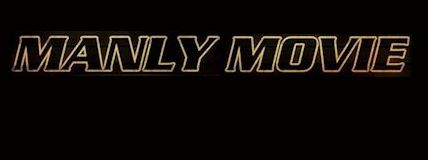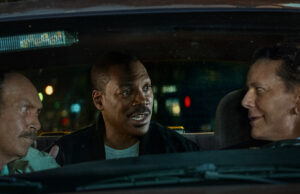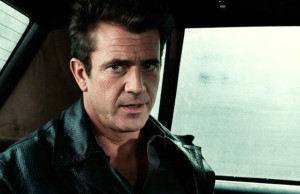REVIEW: Life After Fighting (2024)

Runtime: 126 minutes
Rated: R
What to Expect: An old-fashioned, bone-breaking action flick with exceptional fight scenes.
The directorial debut for veteran martial artist and actor Bren Foster, 2024’s Life After Fighting is undeniably the best Australian martial arts movie in history, and it deserves wide recognition from global action buffs. Taking visible inspiration from seminal films like The Raid and John Wick with traces of Bruce Lee (think The Big Boss, Foster delivers thrilling, proficiently-staged action and a thoughtful story worth caring about, ensuring this is far more than just another humdrum, unremarkable action cheapie. Do not dismiss Life After Fighting as a nasty direct-to-video distraction; the movie confidently stands toe-to-toe with some of the genre’s best offerings, representing a watershed moment for Australian action cinema. It is more thrilling, poignant and engaging than most big-budget blockbusters, making it all the more disappointing that it only received a limited theatrical release in Australia while going straight to streaming in other territories.
A retired martial artist, Alex (Bren Foster) now spends his time running and operating a fighting school, hoping to leave professional bouts behind him after multiple surgeries. Working alongside Julie (Annabelle Stephenson), Alex caters to various ages and abilities, which leads single mother Samantha (Cassie Howarth) to enrol her young son, Terry (Anthony Nassif), at the training centre. Alex and Samantha immediately hit it off, much to the ire of her ex-husband, Victor (Luke Ford). While Victor tries to intimidate Alex by sending hired muscle to disrupt the school, Julie’s two daughters go missing in an apparent kidnapping, sparking a frantic search. Discovering that the abduction is linked to an international child trafficking operation, Alex is forced into a desperate battle for survival.
Life After Fighting does not live or die by its action sequences, as Foster understands the value of storytelling and characterisation to supplement the spectacle. The picture clocks in at a hefty 126 minutes, with most of the hardcore action scenes occurring during the third act. Foster demands patience as he develops the characters and establishes the stakes, ensuring sufficient emotional investment in the story before Alex goes toe-to-toe with multiple combatants in his school during the extended climax. The most significant plot detour involves a fellow martial artist, Arrio Gomez (Eddie Arrazola, who featured in the TV show The Last Ship alongside Foster), who endlessly tries to goad Alex into fighting him. Although ostensibly unnecessary, it successfully adds more dimension to Alex’s character without detracting focus from the narrative, and it provides an excellent opportunity to show off the incredible fighting prowess of Foster and Arrazola. Miraculously, the dramatic build-up throughout Life After Fighting is never boring or dull, which is a testament to Foster’s directorial capabilities, Paul Black’s effective editing, and the terrific casting. Admittedly, the narrative’s rudimentary components are not exactly original, and there are script contrivances to pave the way for the spectacular action-packed climax, but this hardly matters when the execution is so robust.
Once the climax arrives, it is a godsend for fans of violent martial arts cinema. Foster permits glimpses at Alex’s fighting mastery throughout the feature’s first two acts, but the climactic showdown lets him use lethal force against his opponents, resulting in a blast of exhilarating, adrenaline-pumping fun. There is no digital trickery here, nor is the footage sped up – the fights are all 100% real, with Foster and his experienced stunt team engaging in vicious, bone-breaking choreography that will impress even the most jaded movie-watchers. The brawls look visceral and authentic, making one wonder how many bruises and injuries the stunt team sustained during the shoot. Although Shane Parsons’s slick cinematography is slightly shaky, the handheld approach successfully amplifies the intensity of the skirmishes without devolving into a routine of headache-inducing shaky cam or incoherent editing. (Such techniques are normally used to mask shoddy choreography, but Foster does not need to worry about this.) With filming at Foster’s own martial arts school presumably saving on location costs, the movie delivers maximum bang on a small budget, never looking cheap or feeling constricted in terms of scope.
In addition to proving himself a fantastic screenwriter and filmmaker, Foster flexes rock-solid acting acumen here, demonstrating his competency as a dramatic performer to complement his exceptional fighting abilities. Foster is instantly likeable and brings convincing gravitas to the role, allowing the dramatic material to flourish between the action scenes. Foster has appeared as a supporting character in various films up until now (including two pictures with Steven Seagal), but Life After Fighting shows he has what it takes to be a bona fide action star. Alongside him, Cassie Howarth (late of Home and Away) provides outstanding eye candy and dramatic intensity, bringing an emotional depth to the character that is rarely seen in action movies. Annabelle Stephenson further contributes to the movie’s emotional core, resulting in some almost unbearably heart-wrenching and harrowing scenes. Meanwhile, Luke Ford (Animal Kingdom, The Black Balloon) nails the role of the villainous Victor, creating an antagonistic character that is easy to despise from the very first frame, making it all the more satisfying to see him receive his comeuppance during the climax. Ford is virtually unrecognisable here – it is difficult to believe he is the same actor who played Alex O’Connell in 2008’s The Mummy: Tomb of the Dragon Emperor, which reflects the effectiveness of Ford’s performance.
Life After Fighting tackles weighty themes like human trafficking and child kidnapping, with the movie’s optimistic conclusion fundamentally representing a wish-fulfilment fantasy. However, the story does not feel exploitative or disrespectful, as Foster handles the subject matter with appropriate tact, adding harrowing emotional undercurrents that result in edge-of-your-seat, white-knuckle intensity. Life After Fighting is a brilliant directorial debut for Foster, and one can only imagine what he could deliver with a bigger budget and more resources – and, hell, it would be fun to see him team up with someone like Scott Adkins. If you like action flicks, do not miss this movie!!















0 comments